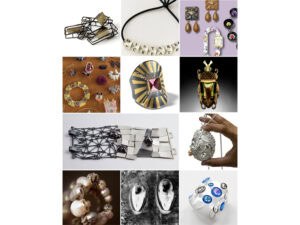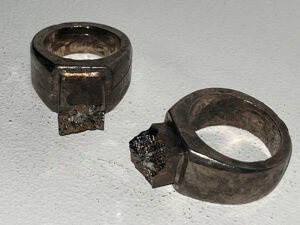Art Jewelry Forum Speakers Tour, Museum of Contemporary Craft (MoCC), Portland, Oregon, October 19, 2013
I am the intern, so I move and paint walls and plinths and arrange lights to temporarily showcase 10 works by 10 makers on a fine Indian-summer Saturday afternoon. A small group of jewelers was gathering in the lab space at the Museum of Contemporary Craft in Portland, Oregon, to attend a jewelry workshop given by Namita Wiggers (a jeweler turned director and chief curator at MoCC) and Benjamin Lignel (a furniture maker turned jeweler/curator/AJF editor). Although the excitement in the room was palpable, the workshop’s intentions were a bit elusive.
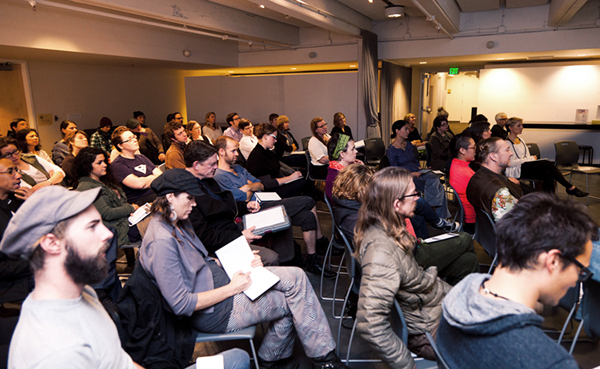
The workshop was intended as a “test drive” for the new publication Contemporary Jewelry in Perspective, to see how the application of this book could provide new avenues of autonomy for jewelry craftspeople. The book examines the current state of contemporary jewelry and the spaces through which it moves. This publication is organized non-linearly and is intended for use as a reference for artists.

With the lecture as a solid foundation, the workshop took the form of the participants’ specific investments in the field through a guided exploration of the spaces through which jewelry moves and a group discussion of our individual work as we would like it to engage these spaces. The group was made up of bench jewelers, non-media-specific artists, art jewelers, students, and one critical-theory writer, each with very different bodies of work and intentions for the ways his or her work should act in the world.
Broken up into two parts, the first half of the day was a lecture and discussion introducing the seven spaces outlined by chapters in Contemporary Jewelry in Perspective. The lecture examined the spaces of “World,” “Bench,” “Drawer,” “Plinth,” “Page,” “Street,” and “Body” as they each position jewelry in vastly different ways and drastically impact the engagement of a piece. The second half of the day was a group critique of our own work as it exists in these specific spaces.
The space of “World” sees jewelry as community signifiers, emblems of pop culture, as a commodity driving global economic inequity, and acting in political arenas. We examined practices that engage with the world, such as Gabriel Craig’s The Prospects of Slow Gold, in addition to jewelry such as the “Live Strong” bracelet, which exists outside of the field of art jewelry and enters a currency of ubiquity to the point of becoming its own medium of expression.
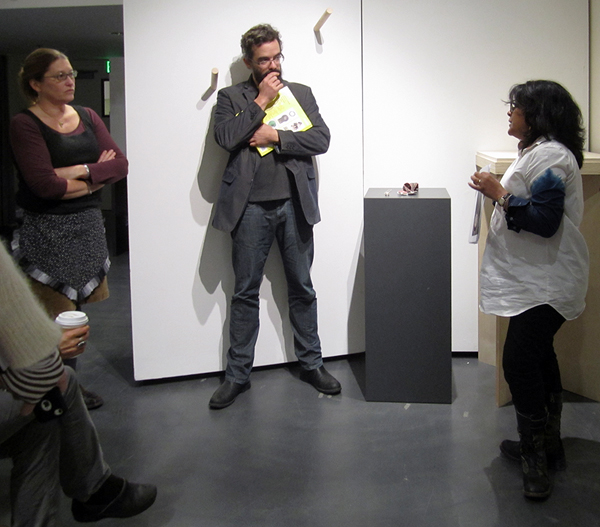
“Plinth” investigates the white cube—gallery and museum installation—and how these models can be harnessed and broken within, and outside of, the gallery walls. “Page” similarly looks at a site that can be shifted by the decisions artists make in representing their work upon it, and how the “Page” can become the work itself.
Discussing the public sphere as a space of activation, “Street” sees makers who wish to inform the public through curiosity, exchange, and the language of advertisement, as they bring their practices and inquiries to urban chaos.
While jewelry no longer has to exist on the body, the space of “Body” is often present even when a physical body is not. This section investigates both the body as space and the absent body as space and how this space influences the reading of a piece.
The most valuable aspect of the workshop was the critique of individual works. I have been a part of plenty of wonderfully provoking critiques, but this critique was different from the others as we skipped the examination of the piece itself and shifted into the way the piece was presented, the intentions of the maker in presenting it, and what space can clearly communicate the intentions of the maker, and in some cases, augment this effectiveness.
These conversations were exciting to say the least. Each critique was different from the last as we all began to see our work activating new potential within different spaces. Through this conversation, one maker realized that she has been making work for the page for her entire career but had never thought about her work through this specific lens. My critique helped me revive a piece that I felt had completely let me down. However, by more carefully considering my installation within the context of the “Plinth,” I began to reconsider a body of work I had cast aside.
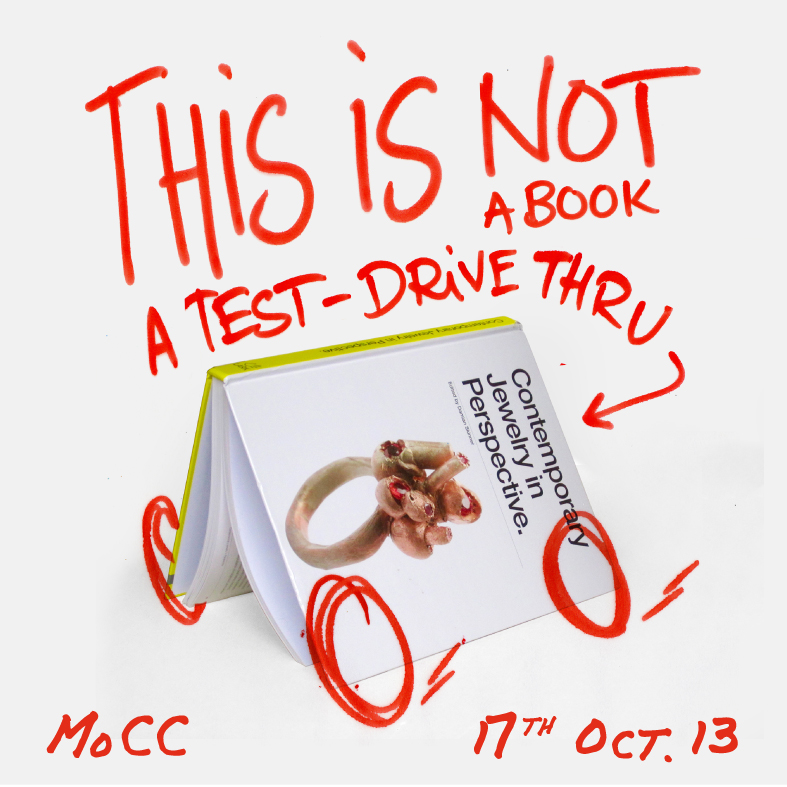
The lecture and workshop series looks to contemporary practices as examples, often overlooking problematic aspects of the work and omitting criticality in favor of focusing on the implementation of the work in the context of the space it is activating. This neglect is intentional, as the lecture and workshop are already very content-heavy, but at times it is difficult to excuse this lack of criticality, as it could begin a valuable conversation surrounding the effectiveness of some of the strategies within the field. However, what the lecture and workshop may lack in criticality they make up for in universality, as every maker can find valuable new strategies through this investigation.
This prolific text, informative lecture, and exciting workshop offer a refreshing perspective to engage with work, looking at the choices we make beyond simply our methods of fabrication, and allowing makers a heightened autonomy and control over the engagement of their work within our information/image oversaturated contemporary world. This new autonomy allows us to BYOI (Be Your Own Intern) as we consider, with more sensitivity, how we can push our practices beyond their current state, find and construct the spaces that will highlight our successes, and allow our work to meet audiences in a purposefully meaningful way.
Follow the link to see the lecture: Art Jewelry Forum Speakers Tour, Museum of Contemporary Craft (MoCC), Portland, Oregon, October 19, 2013

